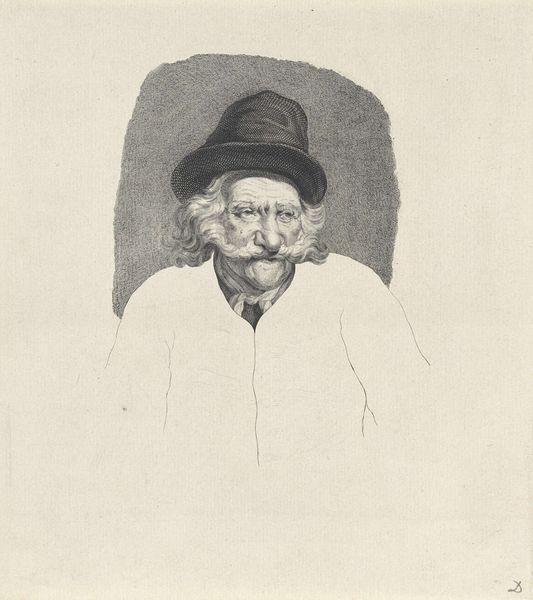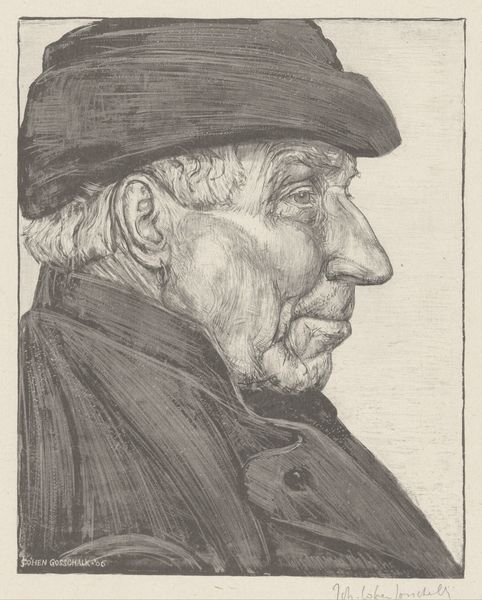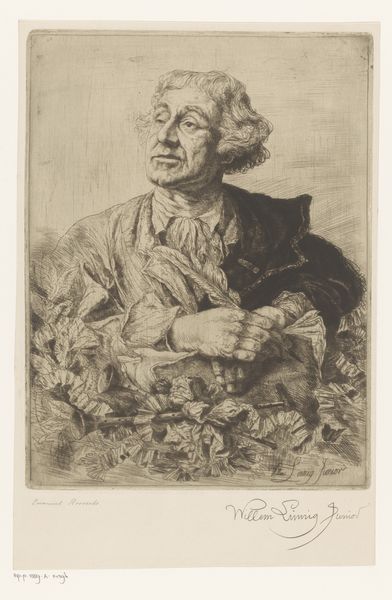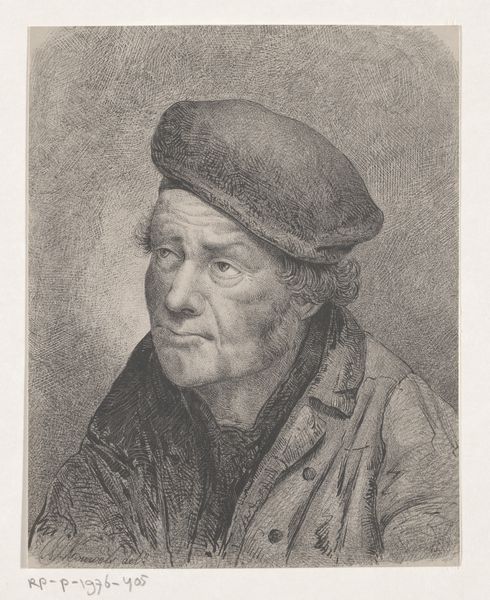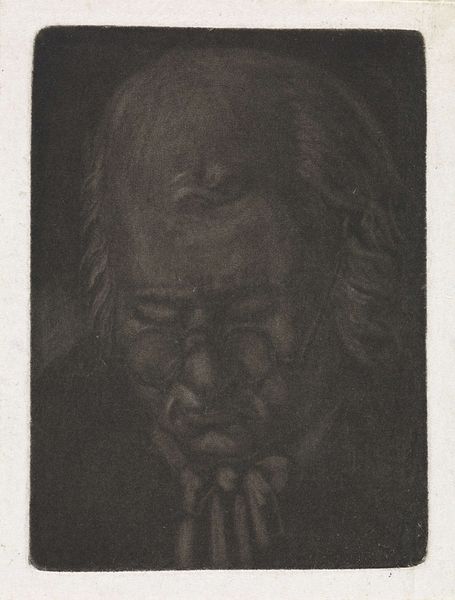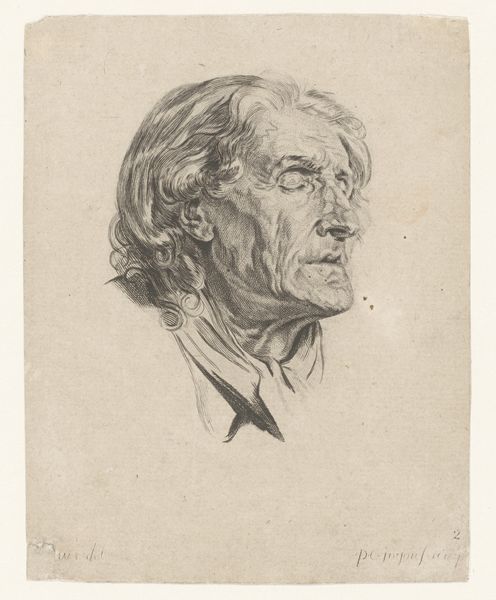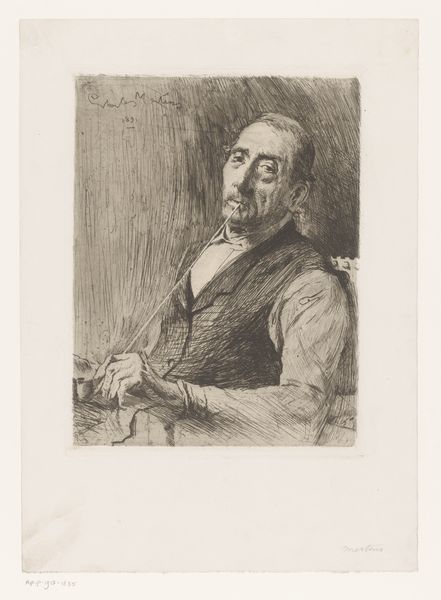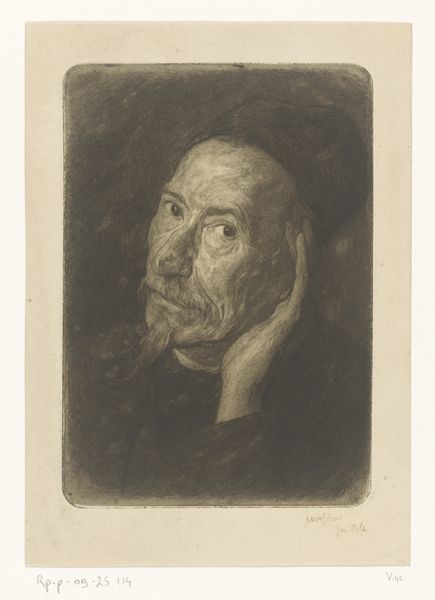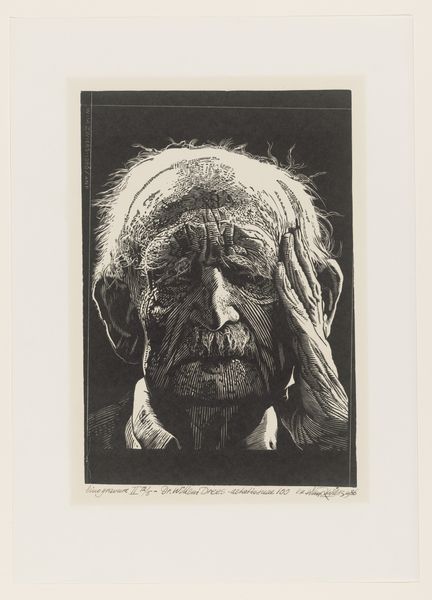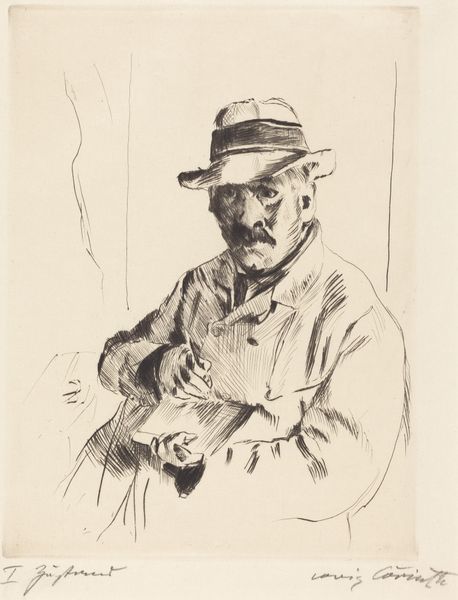
Seated Beggar: Portrait of Old Girard, a Peasant from Chasselay 1772
0:00
0:00
drawing, print, etching
#
portrait
#
drawing
# print
#
etching
#
men
#
portrait drawing
#
realism
Dimensions: Sheet: 16 1/8 × 10 5/8 in. (41 × 27 cm) Plate: 11 1/4 × 8 1/4 in. (28.5 × 21 cm)
Copyright: Public Domain
Curator: Jean-Jacques de Boissieu created this work, a print, in 1772, titled, Seated Beggar: Portrait of Old Girard, a Peasant from Chasselay. Editor: He looks so weary. The stark contrast creates such a somber, almost haunting atmosphere. It's amazing how much texture is conveyed in a black-and-white etching. Curator: Indeed. Notice the meticulous hatching and cross-hatching that define the figure's form. It creates depth and dimension within the otherwise flat plane of the print. His sunken cheeks, the lines etched deeply into his face–they're all rendered with remarkable precision. Editor: It’s more than just technique, though. I wonder about the context. Chasselay was likely an agricultural community, and this "Old Girard" represents the rural poor. This portrait is made right on the brink of the French revolution – it humanizes those at the margins of society who’s exploitation fueled the excess of the era. Curator: Perhaps. Yet, there’s something enduring beyond that singular reading, don't you think? The formal qualities lift it beyond mere social commentary. Consider the composition. He occupies the visual plane directly; the balance of dark tones against the slightly more delineated area where light hits his shoulder is masterful, an almost classical design sensibility in how he frames and models Old Girard’s humanity. Editor: Agreed, that balanced form emphasizes his palpable sense of vulnerability, drawing us into the emotional space of his poverty, to experience empathy. This, rather than documentation, must be the goal of his compositional precision: the ethics of aesthetics reflecting the moral crisis of an age. Curator: Boissieu was celebrated during his time, primarily for landscape and portraiture work, achieving recognition beyond his local area, suggesting the appeal wasn’t just of provincial reportage or mere activism. He wanted to show life *as it was* with as much formal dexterity possible. Editor: Yes. To me this print is a powerful reminder that portraits can function as silent witnesses of the human condition. Art brings visibility to experiences, inspiring contemplation. Curator: A stunning combination of technical rigor and human sensibility, it represents art as inquiry, making an important statement through expert formal restraint.
Comments
No comments
Be the first to comment and join the conversation on the ultimate creative platform.
